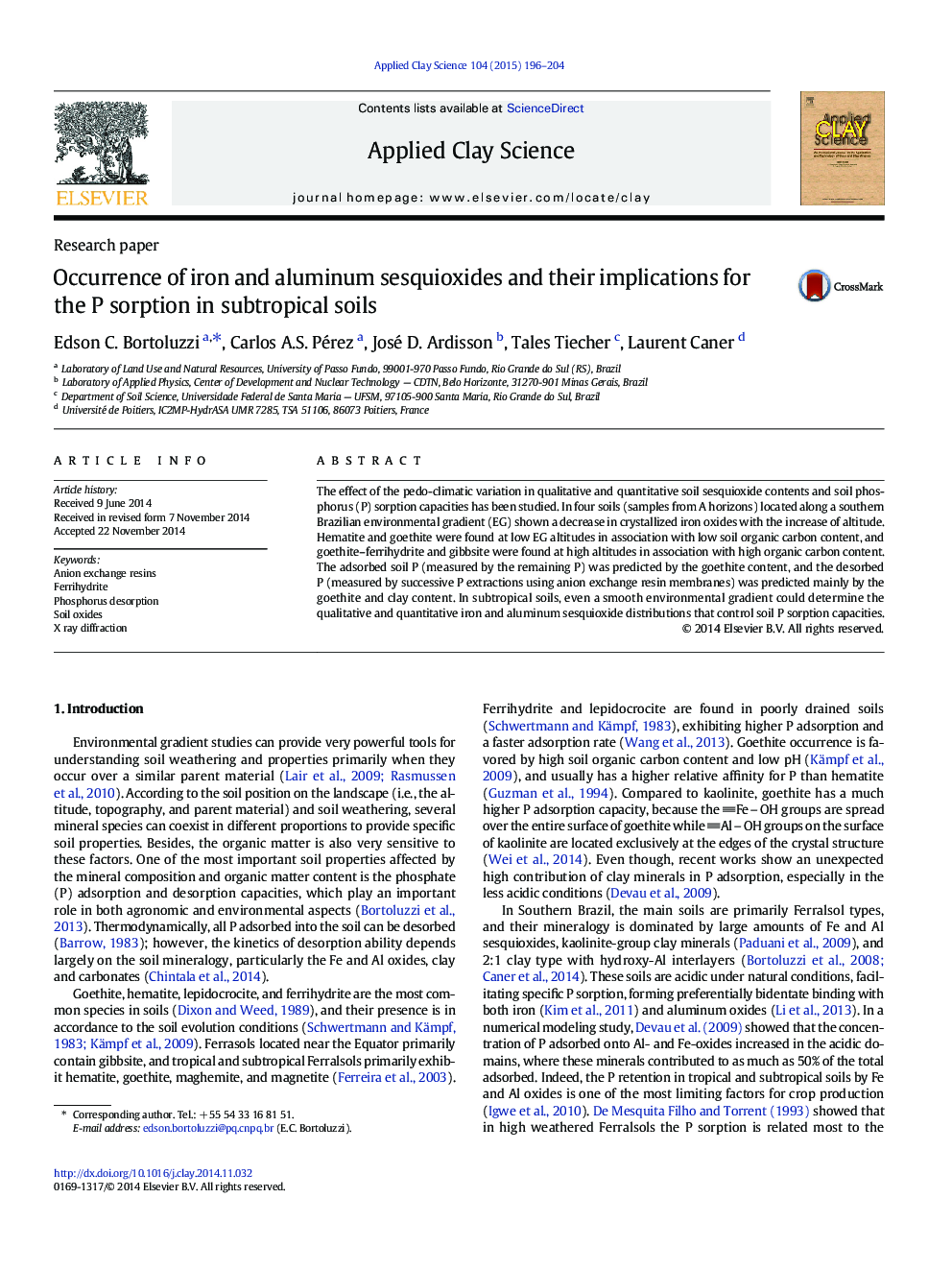| کد مقاله | کد نشریه | سال انتشار | مقاله انگلیسی | نسخه تمام متن |
|---|---|---|---|---|
| 1694629 | 1519074 | 2015 | 9 صفحه PDF | دانلود رایگان |

• Fe and Al sesquioxide occurrence were studied in subtropical soils, Southern Brazil.
• Environmental gradient defines quali–quantitative Fe and Al sesquioxide distributions.
• Iron and aluminum sesquioxide distribution controls soil P sorption capacities.
• Goethite content plays an important rule on soil P desorption capacity.
The effect of the pedo-climatic variation in qualitative and quantitative soil sesquioxide contents and soil phosphorus (P) sorption capacities has been studied. In four soils (samples from A horizons) located along a southern Brazilian environmental gradient (EG) shown a decrease in crystallized iron oxides with the increase of altitude. Hematite and goethite were found at low EG altitudes in association with low soil organic carbon content, and goethite–ferrihydrite and gibbsite were found at high altitudes in association with high organic carbon content. The adsorbed soil P (measured by the remaining P) was predicted by the goethite content, and the desorbed P (measured by successive P extractions using anion exchange resin membranes) was predicted mainly by the goethite and clay content. In subtropical soils, even a smooth environmental gradient could determine the qualitative and quantitative iron and aluminum sesquioxide distributions that control soil P sorption capacities.
Journal: Applied Clay Science - Volume 104, February 2015, Pages 196–204